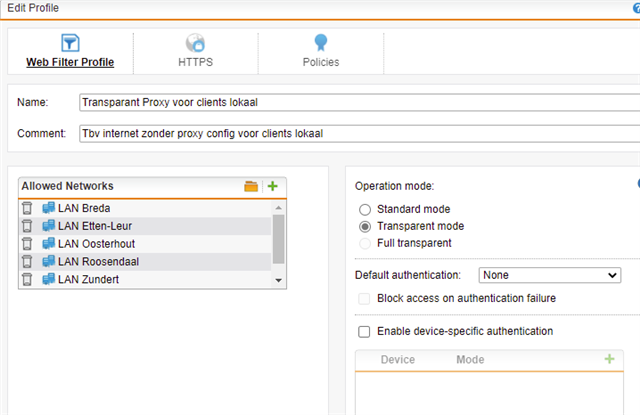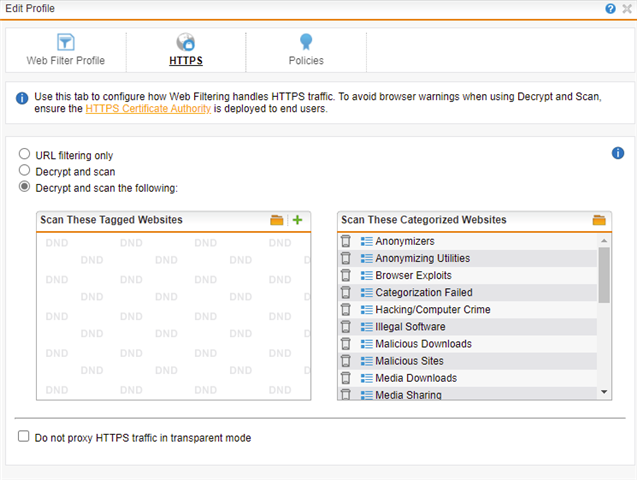Hi all,
Maybe this question is asked before, but I cannot find a clear answer on this.
Scenario:
Our company uses Standard Mode proxy for our Citrix Xenapp environment. Untill last year, internet was only allowed thru your Citrix environment.
Last year we decided to open up internet connection from everyone's client by using the Transparent Mode proxy, so we created a profile and added the client subnets as Allowed Networks. We set it on AD-SSO authentication and are using a Base Policy that blocks all categories and uses a specific user policy (with AD domain users) that allows some categories.
Now regularly we see some issues with this:
1st: Often the user is not authenticated. in the Web filter logging you can see this by an empty username and ad_domain.
Logging example:
2021:01:29-10:51:24 [name of UTM] httpproxy[26192]: id="0060" severity="info" sys="SecureWeb" sub="http" name="web request blocked, forbidden category detected" action="block" method="CONNECT" srcip="192.168.10.193" dstip="" user="" group="" ad_domain="" statuscode="403"
So we decided to change that default Base Policy to open up the same categories as the users policy. That is of course not what we want, but several tries to fix it didn't help.
2nd: When the user is indeed authenticated, the website, for example a Youtube video is not opening and blocked by Surf Protection. Even when we created a Website exception in Filtering Options - Websites. (on complete url, not just youtu.be or youtube.com)
Logging example:
2021:01:29-15:50:45 [name of UTM] httpproxy[26192]: id="0060" severity="info" sys="SecureWeb" sub="http" name="web request blocked, forbidden category detected" action="block" method="CONNECT" srcip="192.168.160.100" dstip="" user="[username]" group="Active Directory Users" ad_domain="[our domainname]" statuscode="403" cached="0" profile="REF_HttProContaInterLan (Transparant Proxy voor clients lokaal)" filteraction="REF_HttCffUsersConteFilte (Users content filter action)" size="3165" request="0xc0f53500" url="">https://youtu.be/" referer="" error="" authtime="62" dnstime="0" aptptime="103" cattime="87" avscantime="0" fullreqtime="225084" device="1" auth="2" ua="" exceptions="" reason="category" category="147" reputation="trusted" categoryname="Streaming Media"
Indeed, this Streaming Media category is blocked in the Users content filter, as soon as I allow this it will work.
But why doesn't it see the Website exception that we created for that specific youtube video?
When I add the website exception 'youtu.be' it does work fine, but we want to block Streaming Media sites like youtube and only open up specific video's or other specific websites, not only domains.
I hope someone can clear this up and point me to the right direction.
Many thanks!
This thread was automatically locked due to age.







